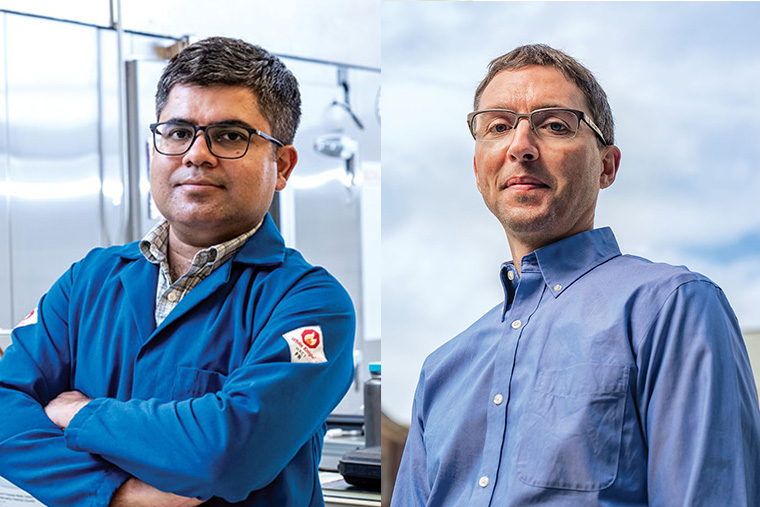Aerosols are bits of solid matter suspended in air. They can absorb and reflect light, contributing to the warming and cooling of the atmosphere. And when they are below a certain size, particles known as PM2.5 can enter a person’s bloodstream and penetrate the lungs.
Randall Martin and Rajan Chakrabarty at the McKelvey School of Engineering research fine particulate matter, which is the leading cause of environment-related diseases around the world. Martin, the Raymond R. Tucker Distinguished Professor, depends on data collected from above the clouds, on the edge of space. Using NASA satellite data, as well as data from a network of air-quality monitoring stations that span the globe, he uses computer modeling to better understand the composition and movement of aerosols around the planet.
Though the focus of their research is similar, Chakrabarty, the Harold D. Jolley Career Development Associate Professor, conducts his research with both feet firmly planted on the ground. He chases wildfires, takes measurements from household cookstoves in developing countries and watches the chaotic motion of a few aerosols — or even just one — using high-tech instruments in his lab.
But this is not a story of never the twain shall meet. On the contrary, the two research methods are intertwined, depending on each other in more ways than one. And their data meet to inform some of the most consequential aspects of our lives: They meet in the lung, where PM2.5 makes us more susceptible to infections such as COVID-19. They meet in the increasingly ferocious wildfires of Utah, California and New South Wales, which send brown carbon spewing across the globe. And they meet in an atmosphere altered by aerosols that absorb and radiate heat — destabilizing the climate, making extreme and deadly weather events more common while threatening our homes, our livelihoods and our health. Approaching the problem of aerosols from opposite ends of the atmospheric spectrum, the two engineers work to create a complete picture of the challenges and, ultimately, offer ideas for mitigation.
Surface Particulate Matter Network (SPARTAN)
Randall Martin leads the grassroots Surface Particulate Matter Network (SPARTAN). This multi-national network measures fine particulate concentrations to evaluate and enhance satellite remote sensing estimates of PM2.5. In 2022, the network expanded with the addition of ten new sites around the world.
